On Saturday, October 10, 2020 I (Tim Carter – W3ATB) met with four other dedicated radio operators in Bethel, Maine. Our goal was to solve a pesky communications issue that has plagued the New England Forest Rally (NEFR) for many years. CLICK or TAP HERE to read about the conundrum.
A year before at the 2019 NEFR I tested Near Vertical Incidence Skywave (NVIS) propagation with two other NEFR operators. It worked well, but I wanted to conduct a thorough test.
I’ve known about NVIS for several years and the ARRL did a fantastic podcast about the topic. Listen to it:
How Does NVIS Work?
NVIS works by sending radio waves straight up and they bounce straight back down off the ionosphere. Imagine pointing a garden hose straight up into the air. Watch this video for the science:
I’m the Chief of Communications for the NEFR and had the pleasure of working with four dedicated radio operators who’ve volunteered for the rally in past years. They understood the importance of coming up with a solution for this world-class racing event. Here are the following Extra-class radio operators who volunteered their precious time and their skills for this test:
- Tim Foy – W1FOY
- Justin Hughes – KJ1H
- JT Isherwood – N1JTI
- Wayne Reetz – KA1CPR
Wayne also brought along his wife Sharyn. It’s always wonderful to have an XYL (former young lady) to help brighten the atmosphere.
We met just before 9 AM at the Sunday River Brewing Company restaurant to get fueled up as we would be in the middle of nowhere once we were up at South Arm.
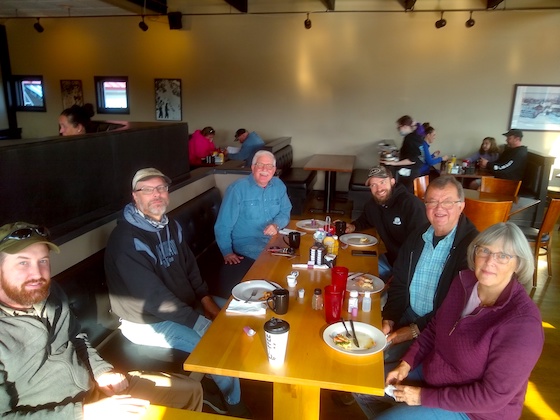
Here’s the gang! Going counter-clockwise around the table: Sharyn Reetz, Wayne Reetz, Tim Foy, Tim Carter, Justin Hughes, and JT Isherwood
Once we left the restaurant, we had to drive nearly forty miles to get to South Arm, Maine. It was a stunning autumn day and we were treated with plenty of ocular delights as we traveled up Route 5 and then South Arm Road.
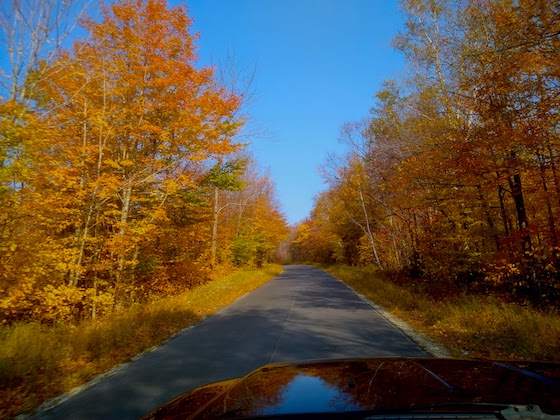
We lucked out on the weather. The temperature by Noon was close to 70 F.
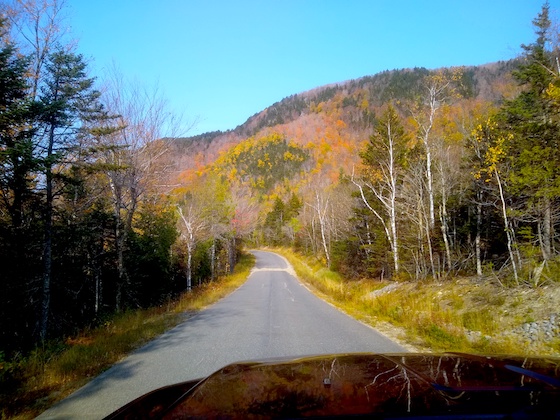
South Arm, Maine is pretty much in the middle of nowhere. It’s a great place for peace and quiet.
We had decided to test two HF bands: 80 and 10 meters. Our plan was to use either a flat or low inverted-V NVIS antenna for 80 meters and vertical 10-meter dipole antennas for the test.
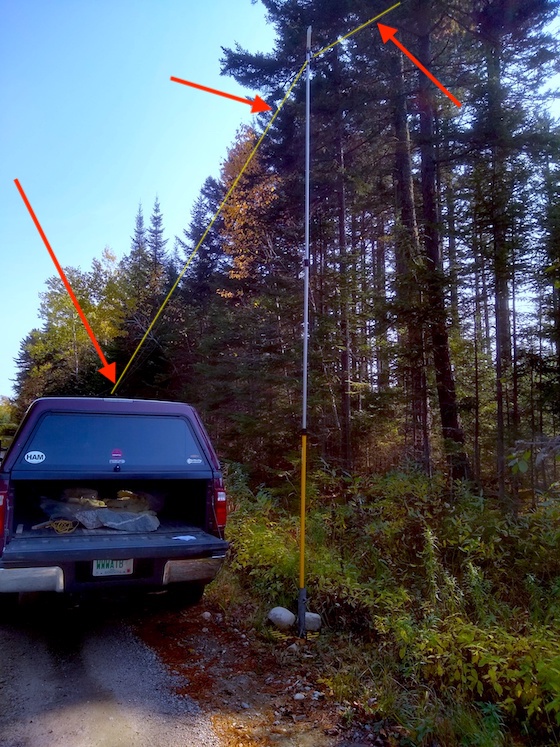
Here’s my 80-meter NVIS antenna setup. I have an extendable fiberglass painter’s pole supporting the center of the 80-meter dipole. The arrows point to yellow lines that indicate where the antenna wires stretched. I was able to set this up in just fifteen minutes.
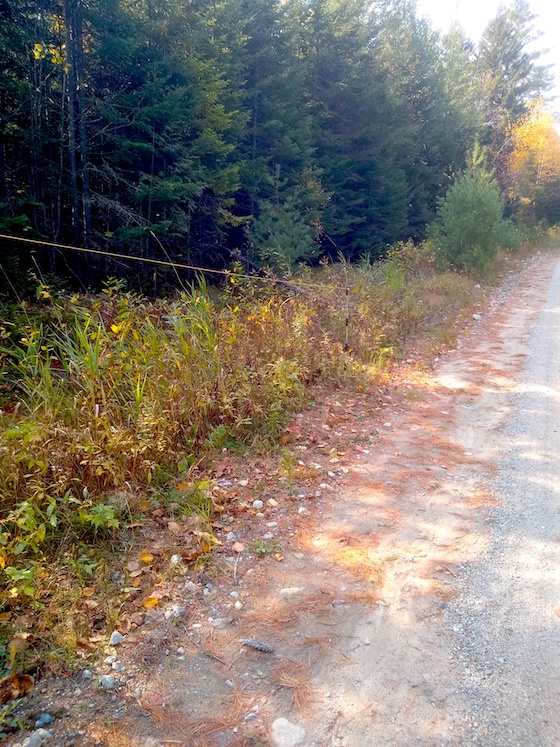
This is one end of the 80-meter NVIS antenna. That’s a fiberglass electric-fence support that’s ideal to hold up the end of the wire. JT had suggested using these. This small post is about 60 feet from the painter’s pole.
I had asked Tim Foy if he’d be kind enough to be net control for the test. He was positioned at the Start position of South Arm stage of the NEFR. I decided to set up at the Finish position about nine and one-half miles down the course. Wayne, JT, and Justin were at critical locations where normal radio operators set up during this NEFR event.
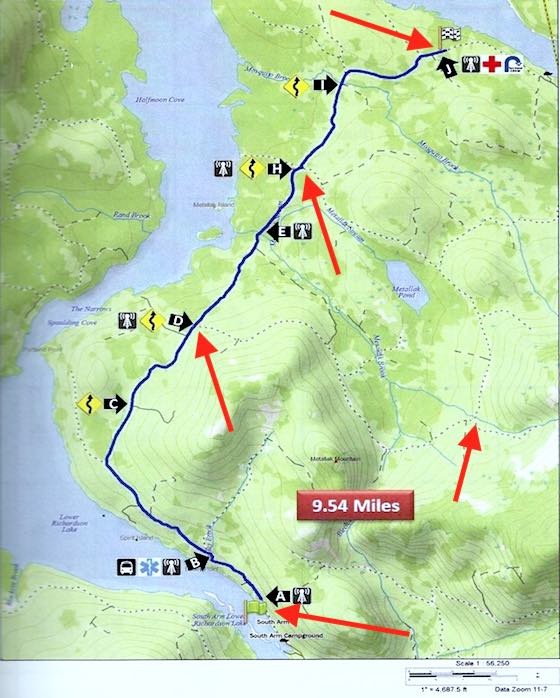
Here’s the actual map of the South Arm racecourse (stage). Tim Foy was at position A, Wayne Reetz was at position D the first turn off up the Icicle Brook Loop Road, Justin was at the red arrow to the right of Wayne at the traditional relay position on Icicle Brook, JT was at position H the other end of the Icicle Brook Loop Road, and I was at position J, the Finish of the South Arm stage.
We all had 2-meter mobile radios as well so we could communicate via a relay system to ensure all were ready to begin the test.
Our plan was to start with 100 watts of power and work down to low power until one, or more, operators could not be heard clearly.
I was using my trusty ICOM-7000 mobile HF radio. The other four operators also were well equipped for the test. I had created some simple logsheets for each operator to use to record the signal strength of each other operator as Tim Foy called for them in the round-robin net.
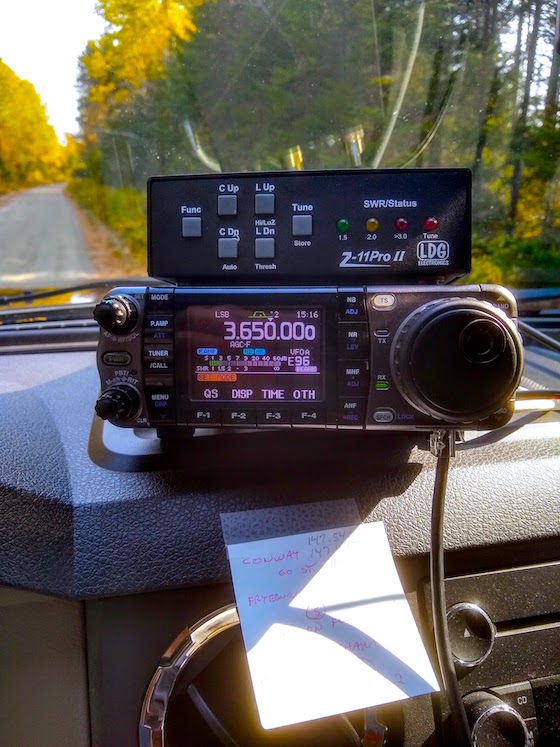
Here’s my ICOM 7000 with my LDG Z-11Pro II tuner ready to transmit.
I was always the last to check-in and I was bouncing up and down during the first round of the net. Every operator’s signal was strong and clear. Justin had a minor over-modulation issue, but even with that I could clearly make out what he was saying.
As we continued to reduce power levels from 100, to 50, to 25, to 10, and finishing with 5 watts, I was able to hear everyone and everyone heard all others. This had never before been done on this stage of the South Arm course. Our test was a success! We had finally solved the South Arm comms conundrum.
Listen to the entire test:
Justin had suggested weeks before that we try 10 meters. It’s a little-used HF band and it very close to the older citizen’s band of 11 meters that was popular in the 1970s. I was able to hear all the other operators on the course with extreme clarity, but I couldn’t hear Tim Foy at the Start. Ten meters turned out to be a dismal failure.
I had hoped it would work because those with Technician privileges are allowed to use a small part of the voice segment of the 10-meter band. This would open up the candidate pool to all who volunteer so long as they own a radio that can transmit on 10 meters.
We are going to continue to test other HF bands and try to get the 10-meter dipole antennas higher in the air to see if that will make a difference. But for now, we know 80 meters NVIS works and we can provide the quality of communications this spectacular race event deserves.

Hi Wayne, I am sure that several hams responded to this post with their input. 10 meters and frequencies below about 10 MHz are entirely different “animals”. An inverted V antenna simple will not be very affective on 10 meters for local communications as NVIS is quite rare on these frequencies (yes I have worked operators on this band with NVIS but it is an occurrence that happens I would say only a few times a year). A much more effective antenna is a 1/4′ or 5/8′ vertical or small 2-3 element beam that is vertical or semi vertically polarized and directed at your target stations. My company operates a wide area licensed emcomm network and frequencies near 10 meters can be quite effective for going thru dense amounts of trees and around hills for many miles. We are running up to 125 watts with digital SSB and it is not uncommon for us to have 30-50 mile contacts that go thru challenging terrain. Ofcourse nothing compares to the simplisticity of NVIS on the lower frequencies if each fixed station is equipped with good resonant antennas or properly tuned ones that have a high angle of radiation. A low to ground horizontal loop or an inverted V work (no higher ever than 1/4 wavelength) work very well for NVIS and ones with reflectors properly spaced below them work even better. I have built a number of antennas and continue to do a lot of tests for HF communications up to 1000 miles with emphasis on NVIS for up to 300 km. I prefer most antennas for NVIS at about 1/8 wavelength heigth. It’s a balancing between good local signals and minimizing your ground losses. I wish you continual good luck on your projects!
That was a great test Tim. It was very interesting to hear the recording. Everyone did a great job and, speaking for Sharyn and myself, we enjoyed meeting everyone and had a really good time. Looking forward to being able to put this to actual use during the Rally next year.
Wayne
KA1CPR